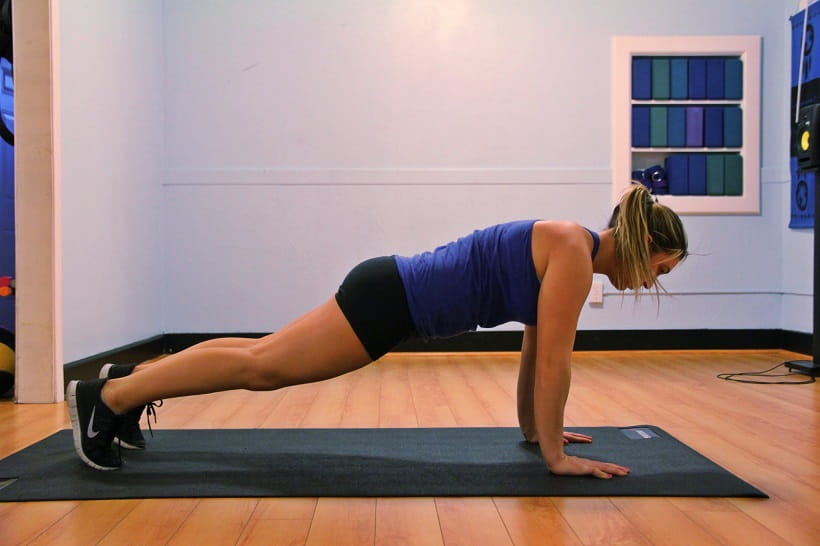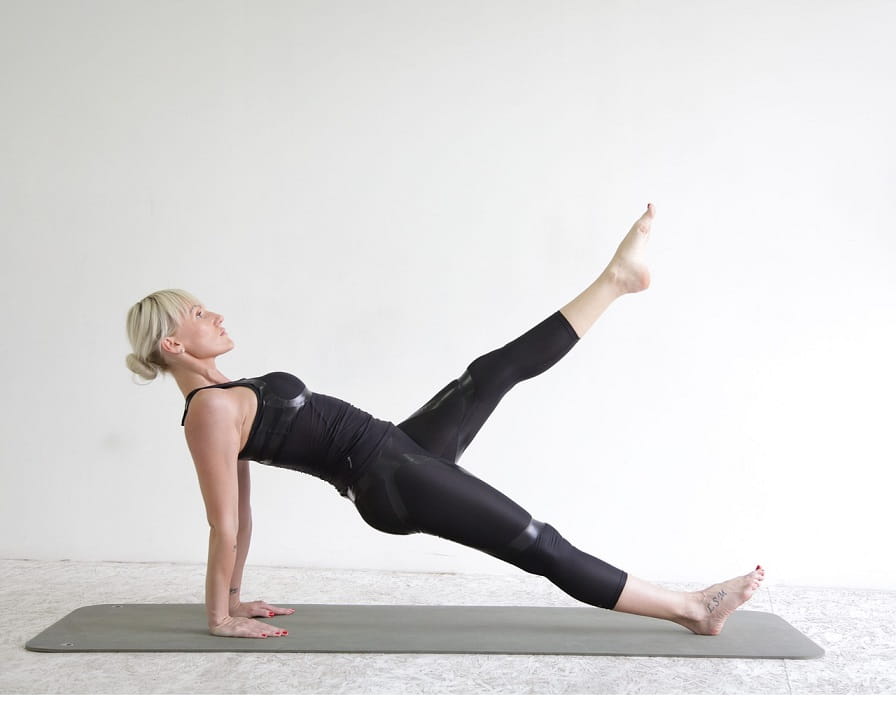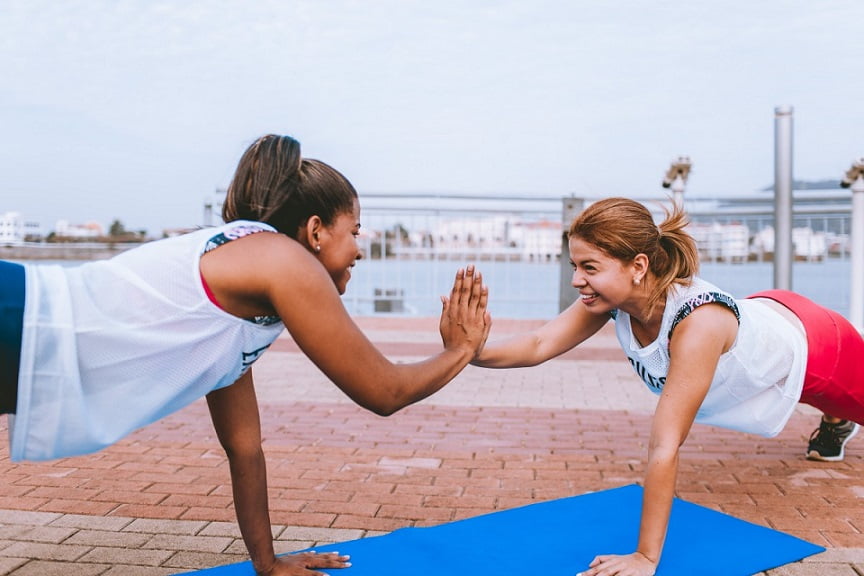Author: Caroline Jones (BPhty – Registered Physiotherapist)
Exercise is a recognised method for helping Lymphedema. And in this article we will look at how exercise can help Lymphedema of the trunk and pelvis.
Does Exercise Help Trunk and Pelvic Lymphedema?
Lymphedema of the trunk and pelvis is a common side effect of breast and gynaecological/prostate cancer treatment respectively, but can also be caused by other medical treatments.
It is often difficult to diagnose especially if there is no swelling seen in the adjacent limbs and with compression in these regions sometimes being challenging, exercise is a valuable tool in its management.
Pelvic lymphedema can be especially distressing due to its possible impact on bladder and sexual function, but despite potential embarrassment, it should not be ignored.

Fortunately, certain exercises have been shown to benefit lymphedema of the trunk and pelvis regions.
Any exercise routine should start with deep breathing to kickstart the lymphatic drainage. Deep breathing increases the pressure in the abdomen, activating the main lymphatic duct that helps to drain lymphatic fluid.
While these deep breaths can be done in any position, one of the easiest is in crook lye, on your back with your knees bent and feet firmly planted on the ground. Place your hands on your stomach so you can feel the rise and fall with each breath.
We know that muscles act as an inbuilt pump for the lymphatic system and an increase in muscle strength can help increase the pump and consequently the amount of fluid that can be squeezed out of edematous areas.
Exercise should therefore be focused around resistance workouts to gain the most benefits.
6 Exercises To Help Trunk & Pelvic Lymphedema
Here are some of the most effective exercises for the trunk and pelvic region:
1/ Clamshells
Lying on your side, with legs stacked one on top of the other. Bend your knees forward, your ankles should be in line with your hips, a sideways crook lying position.
Keep your ankles glued together and lift your top knee up. You should look like a clamshell opening up.
Slowly lower your top knee down and repeat. You should not lift your knee so high that your pelvis starts to rotate, place your top hand on your hip to ensure it stays in position
3/ Glute Bridges

Lying on your back, squeeze your bottom muscles and slowly peel your tail bone off the ground, followed gradually by each level of your spine.
Squeeze your bottom at the top (pause for a few seconds for extra benefit) and then slowly lower back down to the ground.
Focus on keeping both sides of your pelvis level, as if you’re balancing an egg on each hip bone and you don’t want them to fall
3/ Dead Bugs
Lying on your back, point your hands up to the ceiling, so they’re in line with your shoulders.
Lift your feet up into tabletop position (hips and knees at 90 degree angles.)
Slowly lower one leg and the opposite arm towards the ground before returning to starting position and repeating with the other limbs.
4/ Plank

The ultimate core exercise, start with elbows and knees on the ground and hold your body in a plank position.
To progress the plank, lift up off your knees and then up onto hands.
Ensure that you’re not arching your back.
5/ Squats

One of the most versatile exercises, squats work the thighs and glutes. Hold onto a bench or table for balance if needed.
Bend at your hips, sticking your bottom out behind you while keeping your chest up, bend the knees into a squat before returning to starting position, squeezing the bottom at the top.
Start shallow until you build up confidence.
6/ Push Ups

Push ups strengthen the muscles across the chest as well as the core and shoulder stabilisers.
While conventional ones are done up on the toes, they can be made easier by dropping onto your knees and modified even further by performing them with hands up on a bench or even on the wall.
Push ups are also great for patients who may have movement restrictions across their chest e.g. after a mastectomy.
What Else Works?…
In addition to resistance exercises, consider incorporating some stretching, focusing on any joint or muscle that may be slightly tight and restricting your movements.
Any adhesions (e.g. from surgical scars or radiotherapy effects) can restrict fluid movement and result in congestion.
No matter what exercise you’re doing, you should always wear compression.
This can be more challenging in the pelvis/trunk compared to limbs but items such as cycling shorts (for the pelvis) or a firm vest top or sports crop top for trunk oedema can help to assist with lymphatic return.
Scrotal edema can be especially distressing and hard to manage due to the gravity involved, special scrotal supports can prove beneficial.
Pelvic Floor Exercises
Patients who have had gynae/prostate cancer will usually have had lymph nodes biopsied or removed as well as potentially undergoing radiotherapy.
The pelvic floor muscles run from the pubic symphysis (the middle of your pubic bone) attaching onto your tail bone (the coccyx) their function is to support your bladder, bowel and internal reproductive organs.
Contracting these muscles can help facilitate lymphatic return, on the flip side, if there is swelling in the genitals, the muscles will most likely be weak and not function correctly.
Perform a combination of quick “pulses” and longer holds for 5-10 seconds.

General Exercise
Other exercises, such as walking, swimming (the water provides bonus compression,) yoga and pilates are also great choices.
If you suffer from pelvic edema and choose to cycle, ensure you have adequate padding and be careful of prolonged cycling sessions as pressure on the perineum can increase swelling.
The final important factor to consider is trying to maintain a healthy weight, lose excess weight if possible or at the very least avoiding significant weight gain.
Extra weight causes extra strain on the lymphatic system and can also make exercising harder.
Conclusion
I hope this article has helped you learn more about exercises for trunk and pelvic Lymphedema.
Carrying out exercise while you have Lymphedema isn’t always easy, but I wish you luck in making that step towards better health.
Check out lymphedemalifeline.org for more articles like this.
References
1/ British Lymphology Society – Activity & Exercise Fact Sheet
https://www.thebls.com/public/uploads/documents/document-72311580330989.pdf
2/ Lymphoedema Support of New South Wales – Exercises for Lymphoedema
https://www.lymphoedemasupport.com/lymphoedema-stories/articles/exercises-for-lymphoedema
3/ LymphCare – Non-Extremity Lymphedema
https://www.lymphcareusa.com/patient/lymph-a-what/what-is-lymphedema/non-extremity-lymphedema.html#:~:text=Exercise%20is%20always%20important%20to,on%20the%20seat%20is%20required

